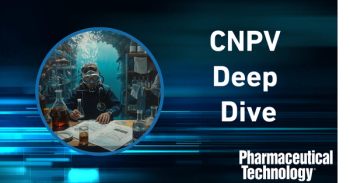
Biosimilars Struggle to Establish in US Market
Developers of biosimilars have become dismayed with difficulties in gaining acceptance and reimbursement from the US healthcare system.
Manufacturers looking to develop and market competitive follow-on therapies have become dismayed with difficulties in testing products to meet regulatory requirements and in gaining acceptance and reimbursement from the US healthcare system. Ten years since legislation authorized this competitive pathway, FDA has approved 24 biosimilars, but only nine are on the market due to patent disputes and reimbursement challenges. The gap has generated calls for reducing current exclusivity terms for biotech therapies and for modifying clinical testing requirements to streamline development. Advocates of biosimilars consider it unethical to require unnecessary switching and crossover studies involving human subjects.
FDA officials remain optimistic about the potential for biosimilars to expand patient access to important biotech therapies and blame complex patent disputes for delaying the process, as well as innovator rebate and pricing tactics designed to deter prescribing and coverage of competitors. Janet Woodcock, director of the Center for Drug Evaluation and Research (CDER), noted at the DIA Biosimilars conference in September 2019 that FDA supports more than 80 biosimilar development programs for 38 reference drugs, gains she attributes to the agency’s Biosimilar Action Plan to coordinate and advance biosimilar development activities at the agency. One sign of progress was FDA’s recent approval of a third biosimilar to pegfilgrastim last week, representing further competition for Amgen’s Neulasta. In addition, Teva and Celltrion announced the launch of a biosimilar to Roche’s Rituxan, a year after FDA approved the follow-on cancer treatment.
Seeking harmonization
Further growth in biosimilars in the United States and around the world requires greater “convergence” among regulatory authorities in policies governing product development, according to Suzette Kox, secretary general of the International Generic and Biosimilar Medicines Association (IGBA). She made a strong case at the recent GRx+Biosim conference sponsored by the Association for Accessible Medicines (AAM) for regulatory acceptance of foreign-sourced reference products in order to attain “truly global biosimilar development.” A viable international regulatory framework must include the use of global comparators, waiving of bridging studies, and acceptance of real-world evidence for biosimilar medicines, Kox stated. While the US leads in market penetration of generic medicines, she noted that it lags notably behind Europe in market competition from biosimilars, due partly to policies requiring bridging and switching studies that she said provide little important additional information.
Gillian Woollett of Avalere Health noted that 53 follow-on therapies to 15 reference products have been approved in Europe since 2006, providing extensive experience in product safety and effectiveness to justify more streamlined biosimilar testing. Woollett urged acceptance of a global reference comparator to advance harmonization of biosimilar development programs worldwide. And she and others are hopeful that extending the World Health Organization’s Prequalification Procedure to biosimilars will support the acceptance of global reference products as comparators and advance a global biosimilar development framework.
Analysts also propose that FDA do more to reduce delays in launching approved biosimilars in the US by expanding listings of patents and exclusivities in the agency’s “Purple Book,” and that Congress could improve the process by imposing penalties on innovator firms that fail to provide timely patent information. Woodcock and others noted that the transition in regulatory status for insulin in March 2020 will provide an important opportunity for biosimilar makers. “Patience and optimism” are warranted, Woodcock commented, as the science gets stronger for this growing industry. And as FDA learns more about reducing “residual uncertainty” and demonstrating product interchangeability, “there will be interchangeable products on the market,” she said, but full acceptance of follow-on products “will take time.”
Newsletter
Get the essential updates shaping the future of pharma manufacturing and compliance—subscribe today to Pharmaceutical Technology and never miss a breakthrough.




